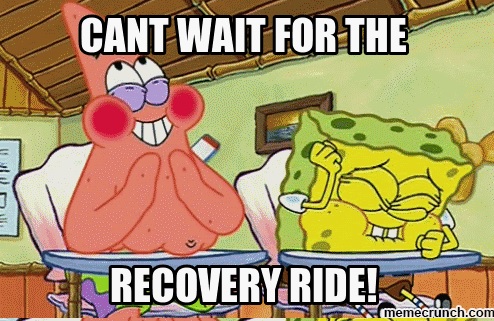It’s a beautiful day and your legs are spinning easily and effortless underneath you. You’re not out for a land speed record and can enjoy the sights. You don’t run out of energy or water because you’re not riding long enough to do so. Why not do a ride like this everyday? It sounds like bliss. For some, this is every ride but for others the draw to ride harder and farther is always there so day in and day out they dig themselves into a deeper hole. They may find that it takes a little bit for their legs to come around and feel good. If this is you, you’re in desperate need of a recovery ride. This can be a challenge if you’re always trying to go hard so knowing when to do one and how to do one right will help to ensure that you get the most out of your recovery ride, and not just in the recovery department but in enjoyment factor as well.
What Is a Recovery Ride?
A recovery ride is a ride dedicated to riding easy and just spinning the legs to get the blood flowing. The increased blood flow without the higher stress on the muscles from riding hard will help to enhance and speed recovery. If you’re particularly tired from a day or three of hard riding, you will probably feel like crap at the beginning and not want to do anything but by the end of the ride you will feel great. It is a boost for the muscles as well as the mind.
The Importance of a Recovery Ride
If you’re looking to recover, why not just stay planted on the couch? The couch is good, particularly if you’re horizontal on it, but it doesn’t get your blood flowing. Doing a recovery ride after lying on the couch will get your blood flowing along with loosening up your muscles. Muscles at rest will tighten if they’re not used or stretched properly. A recovery ride will also keep your legs from feeling stale the following day. Ever take a day off and get back on the bike a day later only to find that you feel tired and unmotivated to ride? This falls within the premise of a body in motion stays in motion while a body at rest stays at rest. When you try and go against what your body is used to, it resists. A recovery ride keeps you riding but at a level that is low enough to not cause increased strain.
When to do a Recovery Ride
You should do a recovery ride about two times a week depending upon how much you’re riding and/or training. It should follow two to three days of harder riding and a single day even if it is a much larger ride than you would normally do. Think century, race, a ride you would maybe only do two or three times a month. You should also do a recovery ride when you set out on a harder ride but simply are too tired to keep going at the same pace. Sometimes it’s good to push through this with “overreaching” training. Other times it just digs you a deeper hole and doesn’t make you any stronger or faster. Simply spin easy for a much shorter duration instead of flipping it and heading straight home.
How to do a Recovery Ride
A recovery ride sounds easy; just ride easy right? Well yes but there’s more to it than that. You should make a concerted effort to spin your legs more than you normally would. Also, when going up any climbs, go extra slow and again, spin as easy as you can up it. If you have to get out of the saddle, do it gingerly and keep your heart rate and/or power down if you’re measuring it. Your recovery ride should range in length from 30 minutes to one and a half hours if you ride more than fifteen hours per week. Also, since you need to go so easy on climbs, seek out the flattest route you can find. In conjunction with this, you want the roads or trails to be mellow with few cars or other riders to avoid. Going slow isn’t fun when it’s on a main road. Find the nice country road or scenic bike path and enjoy.
Also a great way to ensure that you ride slow and resist the urge to go a bit harder is to ride with someone else who is also doing a recovery ride. Include a stop at a coffee shop too. This will help the ride to be focused around conversation and enjoyment, not going hard. Another great option for a recovery ride is to ride with someone who doesn’t ride as much and couldn’t keep up with you otherwise. Someone such as your significant other or friend who you have been trying to get into cycling. Ride slow and next to them. This will keep you at a mellow pace until they try and drop you up a climb; then let them do it. You’re on a recovery ride.
